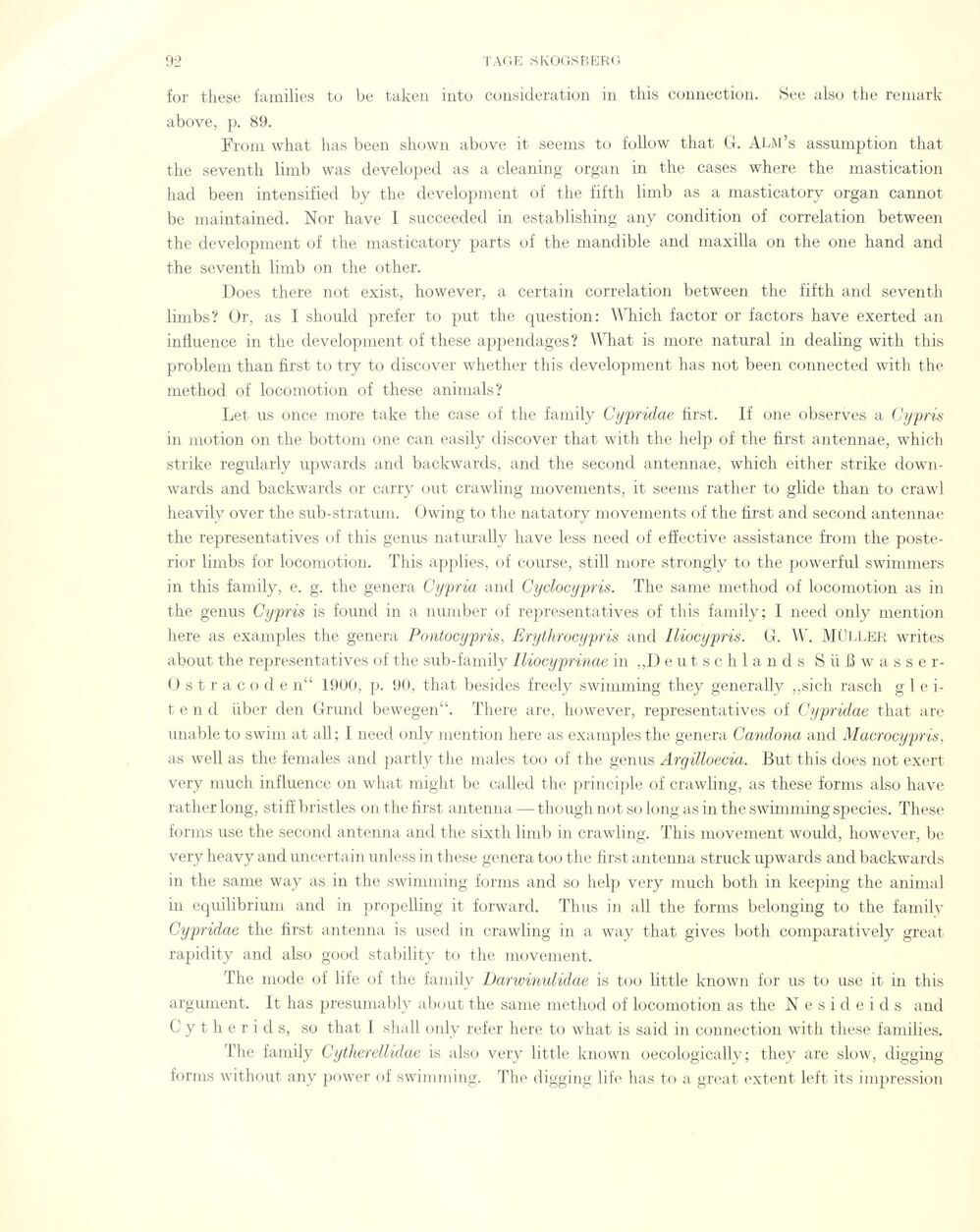
Full resolution (JPEG) - On this page / på denna sida - Sidor ...

<< prev. page << föreg. sida << >> nästa sida >> next page >>
Below is the raw OCR text
from the above scanned image.
Do you see an error? Proofread the page now!
Här nedan syns maskintolkade texten från faksimilbilden ovan.
Ser du något fel? Korrekturläs sidan nu!
This page has never been proofread. / Denna sida har aldrig korrekturlästs.
for these families to be taken into considération in this connection. See also the remark
above, p. 89.
From what has been shown above it seems to follow that G. Akm’s assumption that
the seventh limb was developed as a cleaning organ in the cases where the mastication
had been intensified by the development of the fifth limb as a masticatory organ cannot
be maintained. Nor have I succeeded in establishing any condition of corrélation between
the development of the masticatory parts of the mandible and maxilla on the one hånd and
the seventh limb on the other.
Does t-here not exist, however, a certain corrélation between the fifth and seventh
limbs? Or, as I should prefer to put the question: Which factor or factors have exerted an
influence in the development of these appendages? What is more natural in dealing with this
problem than first to try to discover whether this development has not been connected with the
method of locomotion of these animais?
Let ils once more take the case of the family Cypridae first. If one observes a Cypris
in motion on the bottom one can easily discover that with the help of the first antennae, which
strike reguiarly upwards and backwards, and the second antennae, which either strike
down-wards and backwards or carry out crawling movements, it seems rather to glide than to crawl
heavily over the sub-stratum. Owing to the natatory movements of the first and second antennae
the representatives of this genus naturally have less need of effective assistance from the
posterior limbs for locomotion. This applies, of course, still more strongly to the powerful swimmers
in this family, e. g. the genera Cypria and Cyclocypris. The saine method of locomotion as in
the genus Cypris is found in a number of representatives of this family; I need only mention
here as examples the genera Pontocypris, Erythrocypris and Iliocypris. G. W. Müller writes
about the representatives of the sub-family Iliocyprinae in „Deutschi a n d s S ü 1.1 w a s s e
r-Ostracoden“ 1900, p. 90, that besides freely swimming they generally „sich rasch g 1 e
i-t e n d über den Grund bewegen“. There are, however, representatives of Cypridae that are
unableto swim at all; I need only mention here as examples the genera Candona and Macrocypris,
as well as the females and partly the males too of the genus Argittoecia. But this does not exert
very mucli influence on what might be called the principle of crawling, as these forms also have
rather long, stiff bristles on the first antenna — though not so long as in the swimming species. These
forms use the second antenna and the sixth limb in crawling. This movement would, however, be
very heavy and uncertain unless in these genera too the first antenna struck upwards and backwards
in the same way as in the swimming forms and so help very much both in keeping the animal
in equilibrium and in propelling it forward. Thus in all the forms belonging to the family
Cypridae the first antenna is used in crawling in a way that gives both comparatively great
rapidity and also good stability to the movement.
The mode of life of the family Danvinulidae is too little known for us to use it in this
argument. It has presumably about the same method of locomotion as the Nesideids and
C y t h e r i d s, so that T shall only refer here to what is said in connection with these families.
The family Cytherellidae is also very little known oecologically; they are slow, digging
forms without any power of swimming. The digging life has to a great extent left its impression
<< prev. page << föreg. sida << >> nästa sida >> next page >>